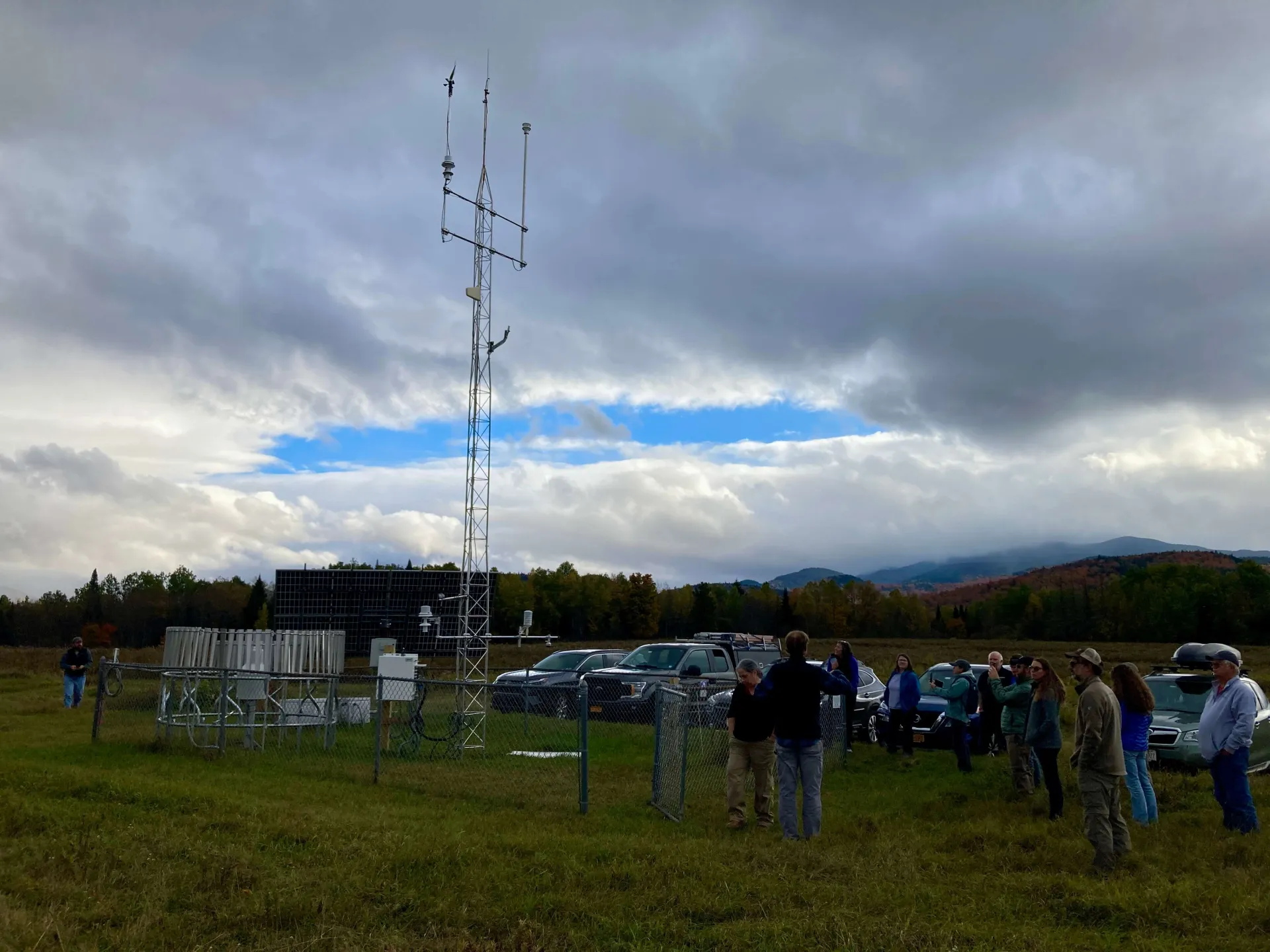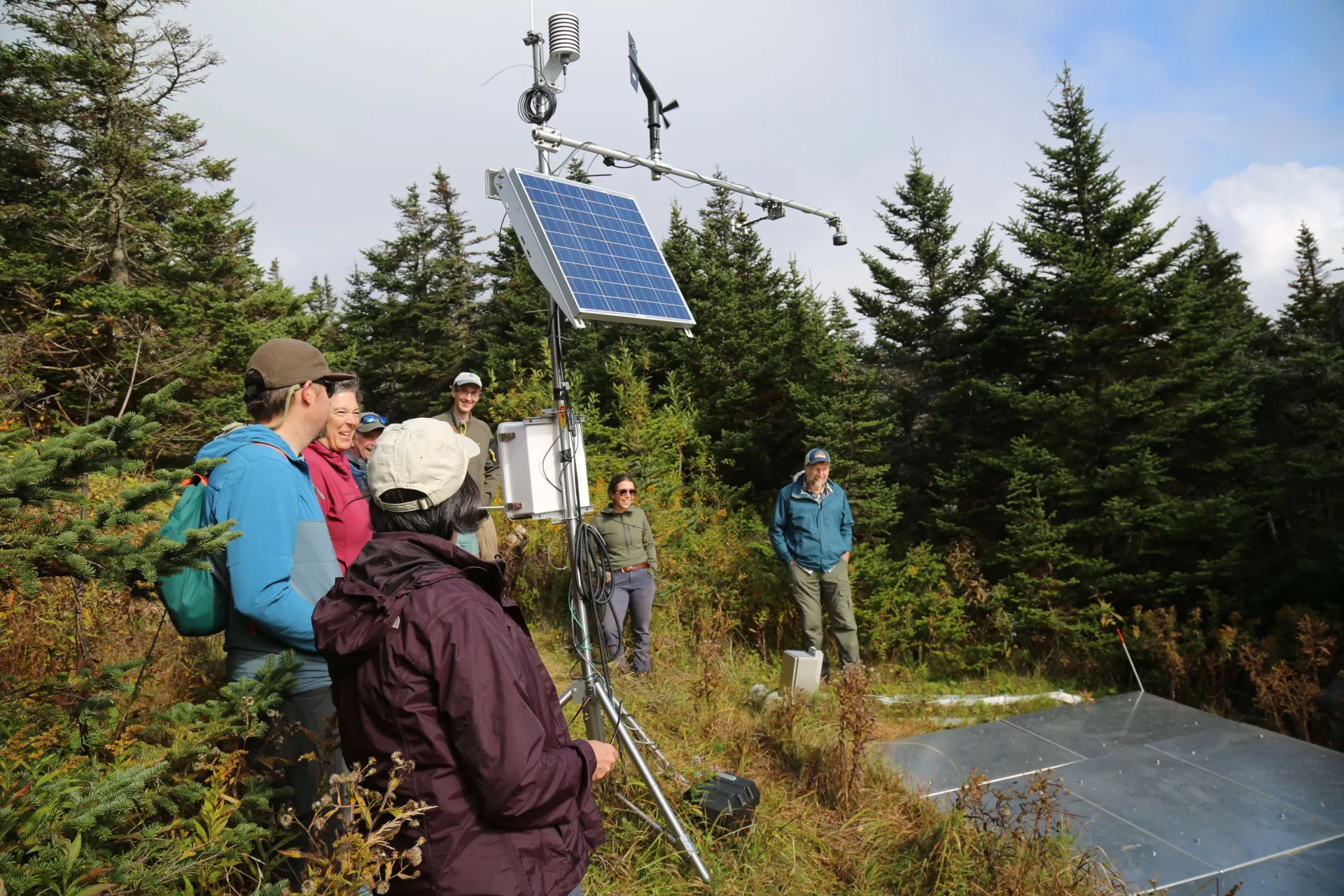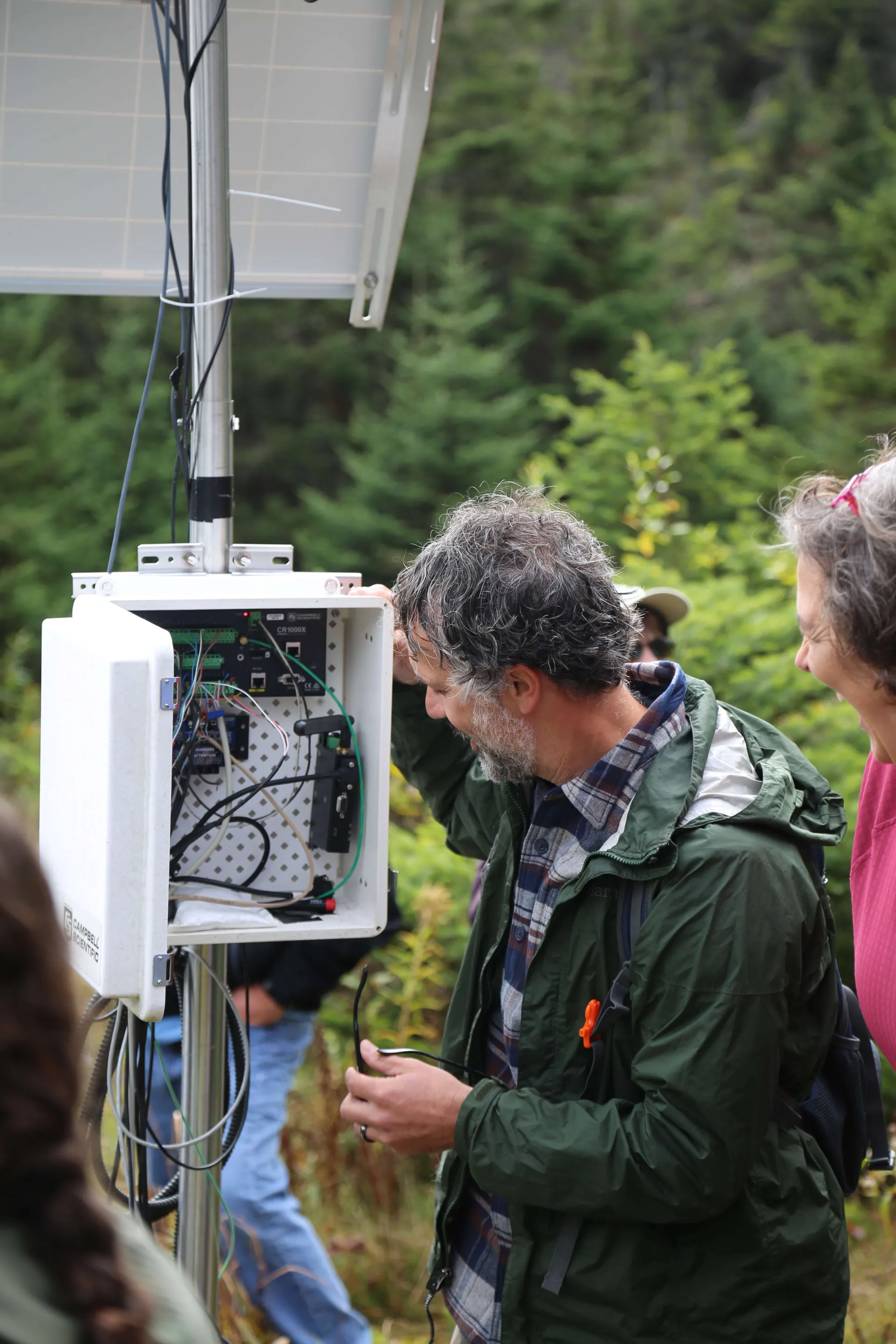
What are Mesonets?
Mesonets are networks of automated weather, often including environmental monitoring stations. They are designed to measure the environment at the size and duration of mesoscale weather events, at the local, state, or regional level. This photo shows what a typical high-end mesonet looks like.
A Statewide Weather Monitoring Network
Bridging the Data Gap
Mesonets, or networks of automated weather stations typically managed by universities, aid communities by establishing greater resiliency to extreme weather events. Stations collect real-time meteorological data that helps forecasters predict weather and emergency managers respond to catastrophic floods.
The Vermont Mesonet will leverage existing monitoring infrastructure, as well as establish additional sites in key high-elevation areas, to create a comprehensive, real-time weather network across the state. The project will identify areas across the state in need of automated weather monitoring, through the engagement of state and federal partners that use this data to respond to extreme weather emergencies.
Weather Monitoring Integrations
The mesonet will utilize different types of weather stations, each serving a specific function, from snow to flood forecasting, tailored to varying elevational changes and watershed dynamics. UVM’s Summit to Shore (S2S) Environmental Observation Network will be integrated into this statewide effort. Funded through the Cold Regions Research and Engineering Laboratory (CRREL), S2S has installed 22 weather and snow monitoring stations along an elevational gradient spanning from Lake Champlain, up to Mount Mansfield, and across to the Northeast Kingdom, providing key snow and meteorological instrumentation where the most rain and snowfall occurs, that have the potential to lead to flooding events downstream.
UVM has also been collaborating regionally to develop the Northeast Snow Survey (NESS) Feasibility Study, which has been identifying opportunities to extend the Natural Resource Conservation Service’s automated weather and snow monitoring network to the Northeast. Additionally, UVM is currently managing an Environmental Protection Agency (EPA) funded project which will standardize and integrate regional mountain weather data communications in collaboration with the Whiteface Mountain Observatory in New York and the Mount Washington Observatory in New Hampshire. The Vermont Mesonet will work to establish synergies between these regional initiatives to maximize future opportunities.
The Mesonet also aims to standardize monitoring along elevational gradients to an international methodology. The Unified High Elevation Observing Platform, proposed by Beneš and international collaborators, will work to develop a consistent gradient-based climate and environmental measurement model, allowing researchers to effectively report, understand, and predict changes to extreme weather events in mountainous environments around the world.
Community Impact
The grant will fund the creation of a prototype monitoring station in a current gap of automated weather which is prone to flooding and downstream snowmelt. This site will serve as a practical resource to a rural Vermont community. The station will provide real-time weather data that will benefit emergency responders, local schools, farmers, and public transportation agencies.
Additionally, the protype will act as an educational tool, providing UVM faculty, staff, and students with a hands-on learning opportunity on automated weather monitoring and data analysis.
For rural communities, the Vermont Mesonet offers greater preparedness and resilience to future extreme weather events. With future funding and a fully established network, municipalities will be able to better predict and respond to storms, floods, and other extreme weather events. With better access to reliable weather information, local farmers can plan their planting and harvest schedules more accurately, schools can make timely decisions about closures, and electric utility providers can make decisions regarding the repair of power lines.



The Importance of a Vermont Mesonet
The creation of a statewide weather monitoring network is a critical step towards meeting the needs of Vermont’s rural communities and building long-term resilience. This will allow UVM to support communities’ work to become more resilient to extreme weather events.